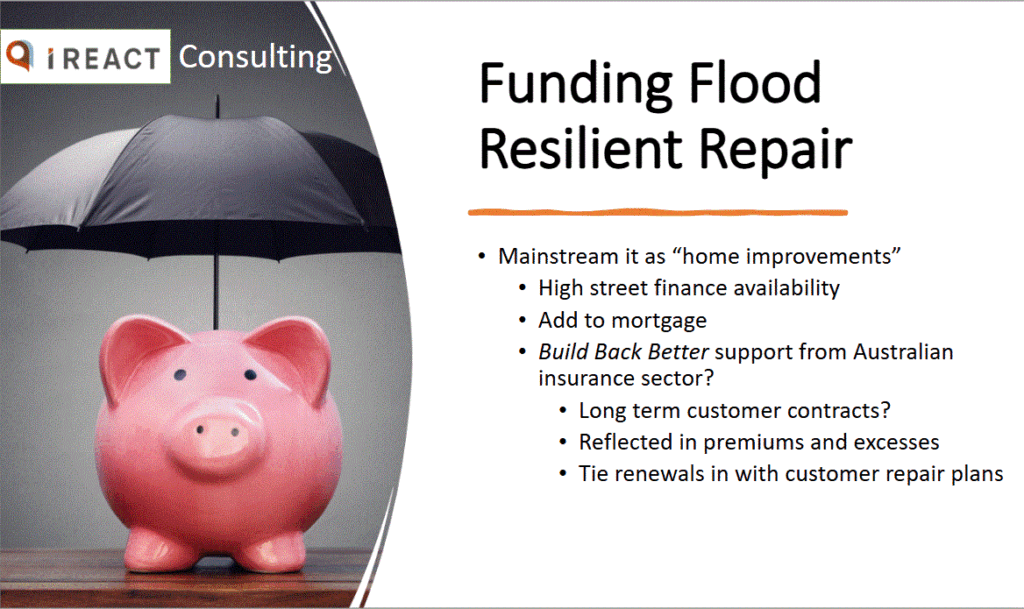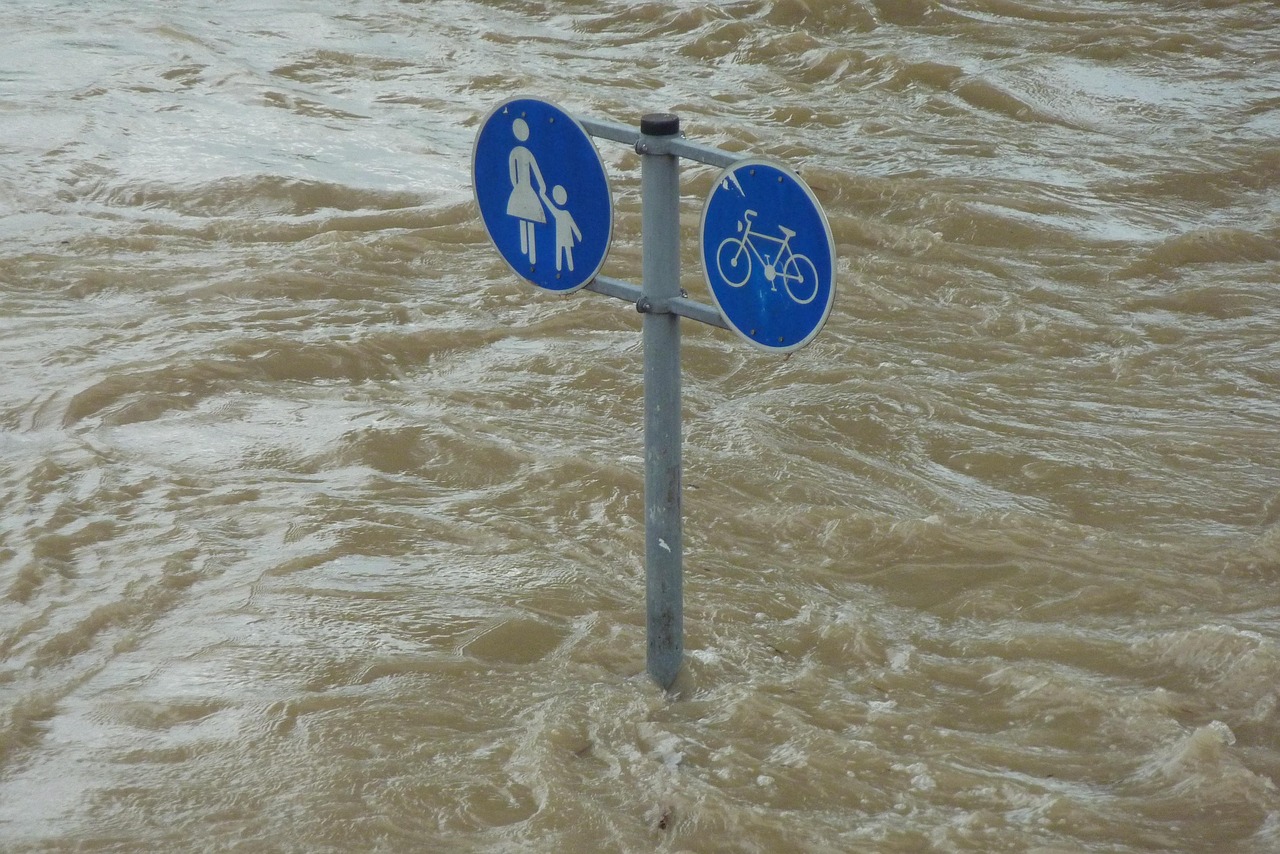Floodproof Buildings - what is possible?
There are many ways to floodproof a building.
1. AVOIDANCE (don’t build in floodplains)
2. ELEVATION (build above the defined flood elevation [DFE]) and
3. MITIGATION (what to do after you’ve built in a floodplain!)
MITIGATION can be divided into two segments –
a) dry proofing (keep the water out as much as possible) and
b) wet proofing (let the water in, but ensure you are able to recover the property quickly and economically)

It may seem obvious that everyone wants to employ “dry waterproofing” but this is not always possible and even when it is there is always bound to be some ingress of water, especially when dealing with a property that is already constructed*
*The depth of the flood water may mean it is impossible to prevent water entry without causing structural damage to the property. Typical flood protection levels for residential properties range between 300mm and 900mm. It can be much higher for commercial buildings, or not. If in doubt ask a structural engineer!
“Wet proofing” is becoming more of a favourable option, especially as the floods exceed historical depths. It has a part to play in a standalone applications and in addition to “dry proofing” *There will always be leaks when trying to flood proof an existing property. The wall/floor/foundation junction is extremely hard to protect and access. The floors, even if made of concrete, may leak or suffer from heave, and crack during the flood event. Pumps are an essential part of both solutions, yet so many people scrimp at this stage!!!
“Dry Proofing” (Flood Resistance) is well known across the world with many products available from all corners of the globe. There are good product standards too, with independently verified leakage rates and ISO manufacturing standards. BS851188 and BS85500 from the British Standards Institute and FM2510 from FM Approvals (part of the FM Global Group). Choose your products carefully; some are cheap for a reason!
“Wet Proofing” (Flood Resilience) is a work in progress. Solutions can include waterproof walls, floors, ceilings, internal doors and kitchens, amongst other things, as well as existing dry proofing solutions of flood doors, barriers and non-return valves. The issue for insurers will always be one of efficacy though. These products don’t fit neatly into the above stated standards and, unlike resistance products, they are often hidden from view once installed.
That is where the, FloodRecover 3R Piecemeal Strategy comes to the fore. It’s a bit of a long winded title but that is because it needs to cover a lot of issues. It needs to be affordable, it needs to be documented, it needs to be accredited and it needs to be verifiably INSURABLE.
Unlike dry proofing wet proofing can be undertaken in a piecemeal manner, according to budgets, timescales and certain design criteria.
The 3Rs address affordability and practicality and they cover Replaceable – Repairable – Recoverable strategies for a lifetime’s solution to flood mitigation.
For me FloodRecover 3R Piecemeal Strategy is the future for insurable flood protection as it embraces flood mitigation in an holistic manner, provides the efficacy needed for insurers and leaves the property owner with a home or business that they can return to as soon as the flood waters recede and carry on with their lives.
How does it work? That’s in the next newsletter.






